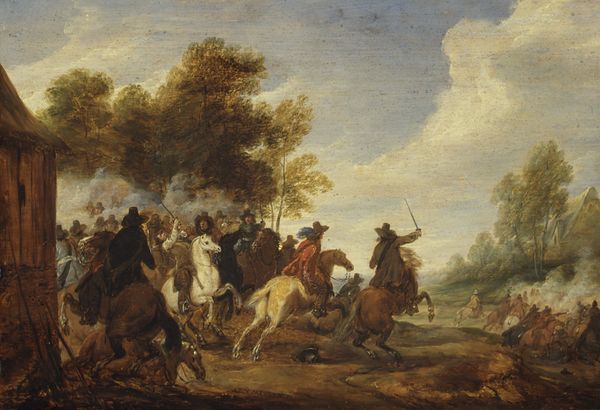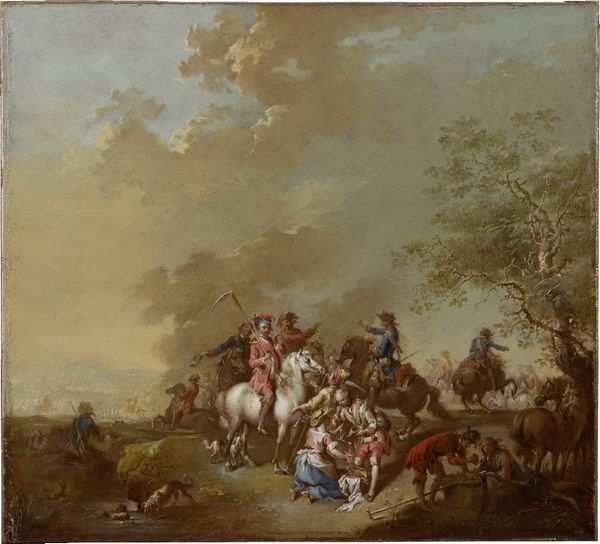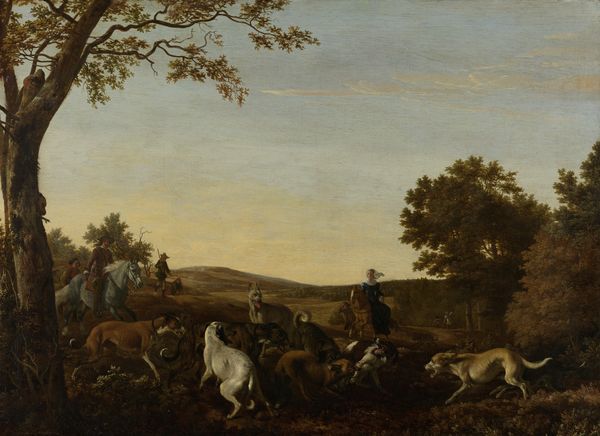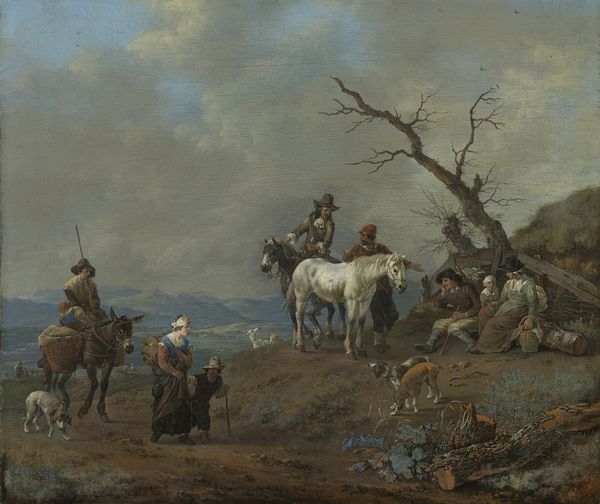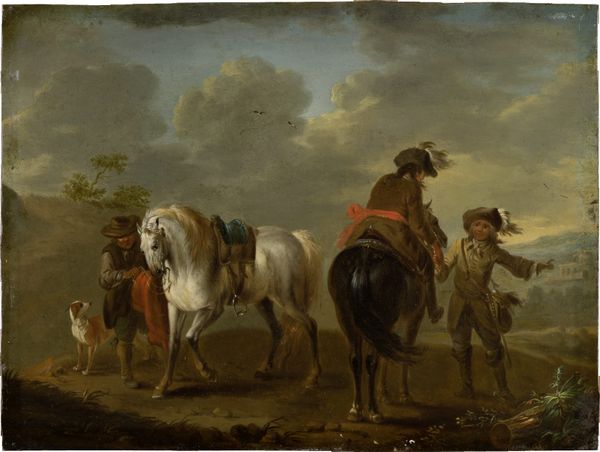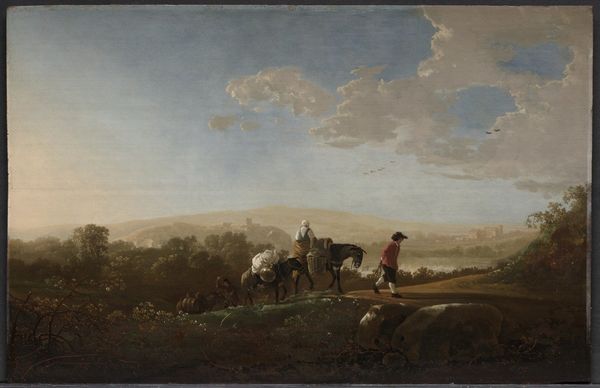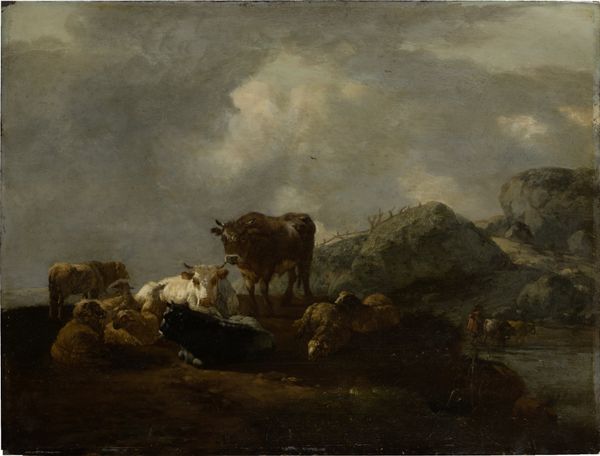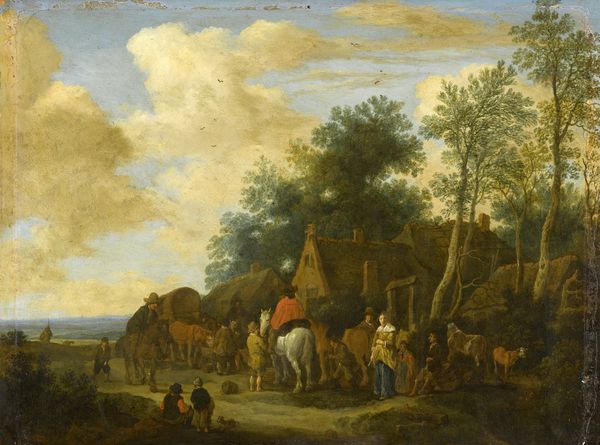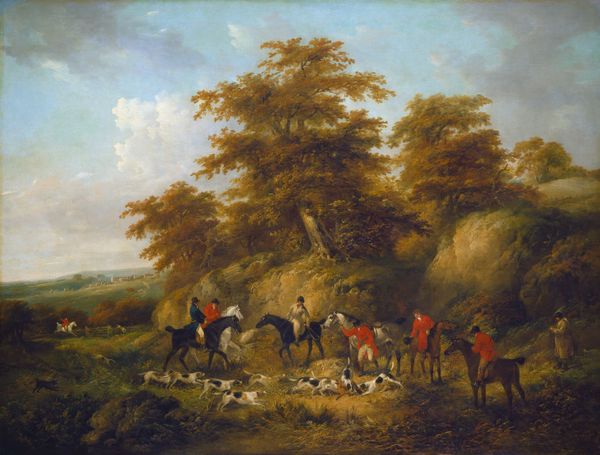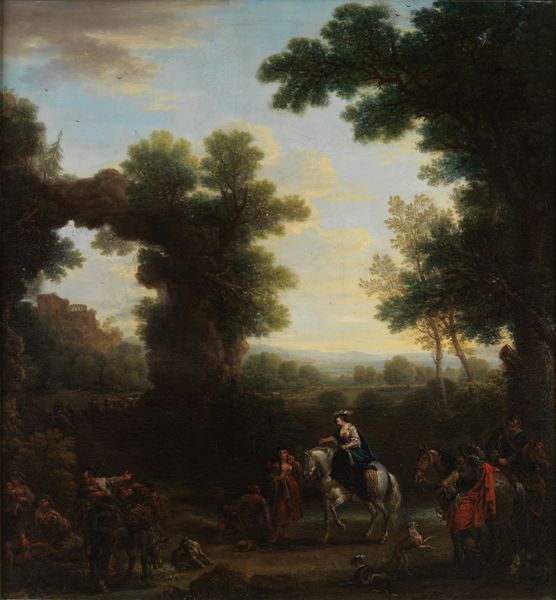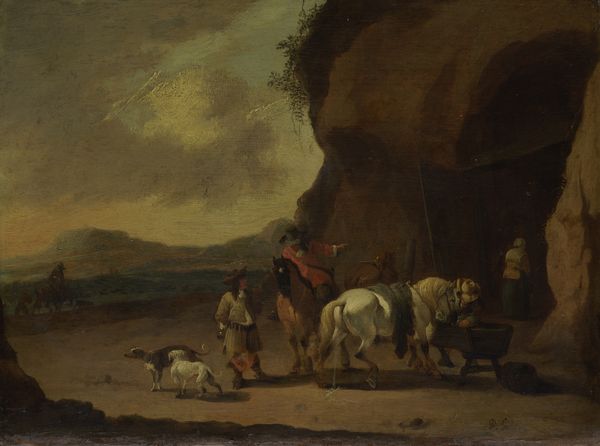
painting, oil-paint
#
baroque
#
dutch-golden-age
#
painting
#
oil-paint
#
landscape
#
figuration
#
genre-painting
Dimensions: support height 36.9 cm, support width 48.9 cm, outer size depth 4.3 cm
Copyright: Rijks Museum: Open Domain
Curator: Philips Wouwerman's "The Bucking Grey," painted circa 1660 to 1665, depicts a scene bustling with equestrian activity. What strikes you first about it? Editor: It's incredibly dynamic! All that movement suggested by the rearing horse and the swirling clouds… you can almost feel the uneven ground. There's a sense of immediate disruption, and a fall from grace. It seems less focused on ideal beauty than it does on portraying an ordinary reality. Curator: Exactly, though these genre scenes, popular during the Dutch Golden Age, also project societal values. Wouwerman was a master at portraying everyday life but filtered through the lens of class and social order. Note the finely dressed figures contrasted with the peasants on the ground. Editor: The clear class division is stark. Look at how precisely the horses are rendered. What can we deduce about his handling and preparation of paint to get such fine, shiny detail? And is it me, or is this about something more than just leisure and recreation? Is he commenting on something about production of landscapes and genre scenes and maybe the production of leisure and what’s possible at that time? Curator: Well, consider that the art market in the Netherlands was booming. Paintings like these served as status symbols for the burgeoning middle class. Wouwerman catered to this market, creating idealized yet relatable scenes that reinforced existing hierarchies. He even seems to borrow some composition tactics from history painting, thus giving himself greater credibility. Editor: True. But Wouwerman's handling of the materials, those subtle layers of oil paint, is superb, as well! They aren't just decorative, but show off a technical mastery of painting that must have been recognized even then, or Wouwerman never would have had the opportunity to build the landscapes in such perfect color coordination. Curator: Agreed, his virtuosity undoubtedly contributed to his success. His ability to create visually appealing narratives secured commissions. Art, in this context, was about commerce, social positioning, and constructing a desirable self-image for the patron class. Editor: I find myself increasingly focused on the figure sprawled in the lower right. Are we meant to consider the conditions that are possible for the maker, even as we examine the world presented by Wouwerman? Curator: I think what's remarkable is Wouwerman's knack for merging seemingly disparate aspects – technical skill, social commentary, market appeal – into a single, compelling image. Editor: Absolutely. He truly captures a specific moment in time, showcasing not only a painter's skill but also the undercurrents of society and work within. Curator: Ultimately, "The Bucking Grey" exemplifies how art functions within a complex web of cultural and economic forces. Editor: Leaving one to reflect upon its material realities of work and opportunity, visible even in this seemingly lighthearted genre scene.
Comments
No comments
Be the first to comment and join the conversation on the ultimate creative platform.
